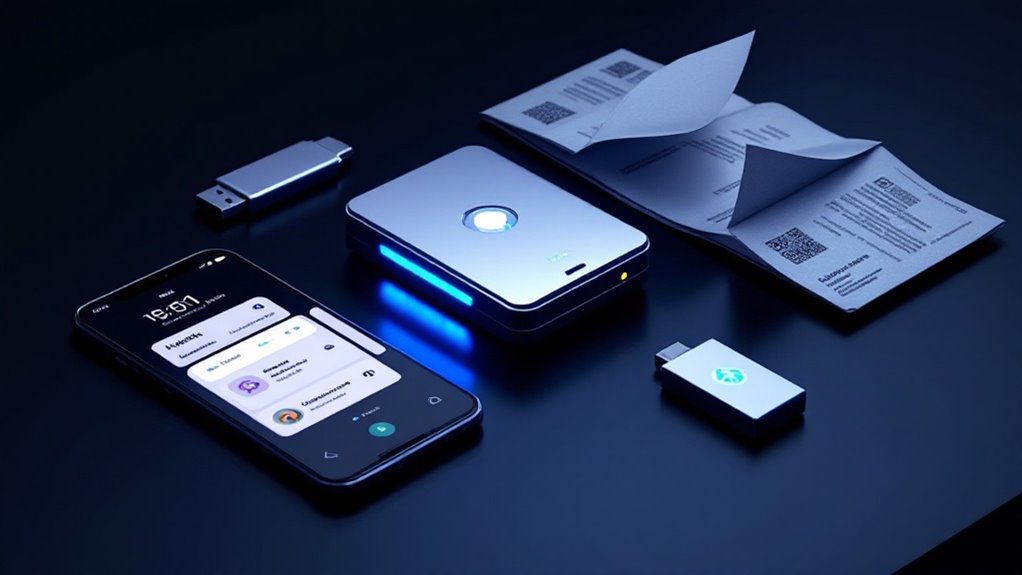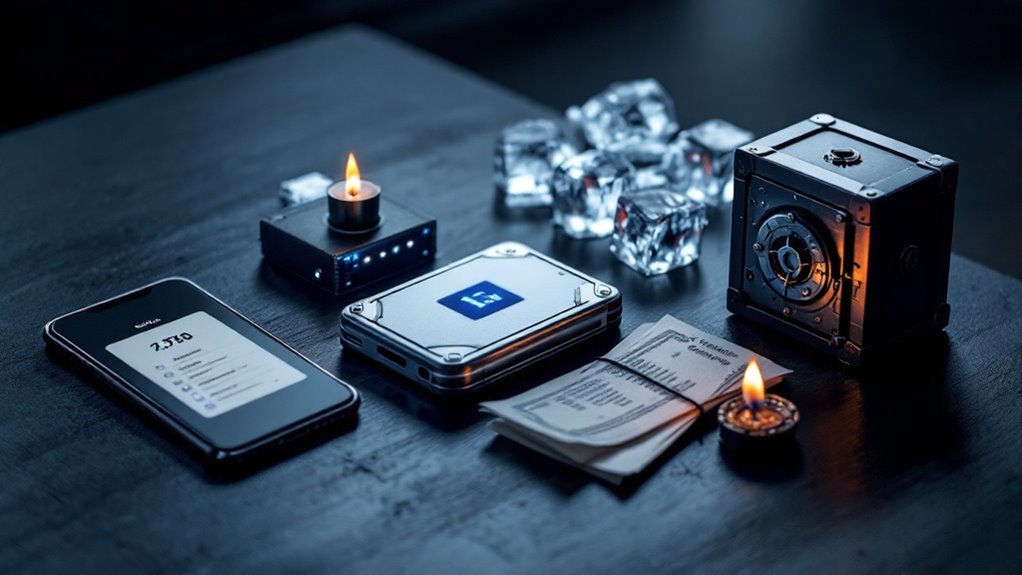Cryptocurrency wallets span a spectrum of security and convenience, from always-connected hot wallets to fortress-like cold storage solutions. Hot wallets, including mobile and desktop apps, prioritize easy access but face higher risks. Cold storage, particularly hardware wallets, operates like digital vaults with military-grade protection. Between these extremes lie software wallets, paper wallets, and custodial solutions – each balancing accessibility with security. The journey into wallet selection reveals fascinating layers of crypto safeguarding.

While the world of cryptocurrency continues to evolve at breakneck speed, crypto wallets remain the essential guardians of digital assets, much like traditional wallets safeguard physical cash and cards. In this digital frontier, users face an important choice between hot and cold storage solutions, each offering its own blend of convenience and security.
Hot wallets, the always-connected digital sentinels, shine in their accessibility but cast a longer shadow when it comes to security risks. Like a house with its lights perpetually on, they're easy targets for cyber thieves lurking in the digital darkness. Mobile and desktop wallets exemplify this category, offering user-friendly interfaces that make daily transactions as simple as sending a text message. Modern hot wallets incorporate multi-factor authentication to enhance security and protect against unauthorized access.
Cold storage solutions paint a contrasting picture, operating like digital vaults buried deep beneath the internet's bustling surface. Hardware wallets, those thumb-sized fortresses of encryption, have become the gold standard for serious investors. Open source software allows users to validate their device's operation with complete transparency. The integration of a Secure Element chip ensures that private keys remain protected even if the device falls into the wrong hands. They clutch private keys close to their silicon hearts, releasing them only when their masters provide the correct combination of PINs and passphrases.
The battle between custody and control plays out in the choice between custodial and non-custodial wallets. Custodial solutions, often provided by exchanges, are like digital safety deposit boxes where someone else holds the keys. It's convenient but requires an almost medieval level of trust in one's chosen custodian.
Entrusting your crypto to custodial wallets is like handing over your treasure chest keys to a stranger, hoping they prove worthy guardians.
Non-custodial wallets, by contrast, embrace the "not your keys, not your coins" philosophy, placing both power and responsibility squarely in the user's hands.
Paper wallets, though increasingly rare, represent the most tangible link between the physical and digital domain. These printed keys, while immune to hackers, face more mundane threats – a spilled coffee could literally wash away a fortune.
Software wallets strike a middle ground, offering flexibility across devices but requiring vigilant protection against malware, much like defending a castle against invisible invaders.
In this evolving landscape, the choice of wallet often reflects not just security needs but a deeper philosophy about control, trust, and the future of money itself.
Frequently Asked Questions
What Happens to My Crypto if I Forget My Wallet Password?
If someone forgets their crypto wallet password, their funds remain permanently locked on the blockchain. Without proper recovery methods, the cryptocurrency becomes inaccessible forever, joining billions in permanently stranded digital assets.
Can Someone Hack My Hardware Wallet if They Find It?
Yes, hardware wallets can be hacked if physically obtained. While secure elements protect against basic attacks, sophisticated methods like voltage glitching or side-channel attacks could potentially extract private keys with advanced equipment and expertise.
How Much Does It Cost to Create a Crypto Wallet?
Crypto wallet development costs vary considerably, ranging from $10,000 for basic functionality to $50,000+ for advanced features. Factors affecting price include security requirements, supported cryptocurrencies, and development team location.
Can I Recover My Crypto if My Wallet Device Breaks?
Yes, crypto funds can be recovered if a wallet device breaks. By using the original seed phrase, users can restore their wallet on a new device or compatible software wallet following standard recovery protocols.
Are Crypto Wallets Insured Against Theft or Loss of Funds?
Most crypto wallets are not insured against theft or loss. While some exchanges offer limited insurance for custodial wallets, non-custodial wallets typically have no coverage, leaving users responsible for securing their funds.









